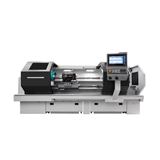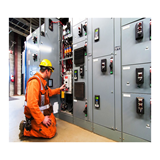Discover trencher costs, types, operating tips and finance options. Your complete 2025 buying guide for trenchers in Australia.
Key takeaways
- Trencher prices in Australia start from $5,000 for small walk-behind units and go up to $80,000+ for large ride-on or attachment trenchers used in civil works and pipeline installation.
- Most popular types include walk-behind trenchers, ride-on trenchers, and attachment trenchers for skid steers and excavators.
- Hiring rates for trenchers average between $250 and $800 per day, depending on size and type—an important cost benchmark when considering ROI for purchase.
- Operating costs typically range from $10 to $35/hour, factoring in fuel, wear parts, and basic maintenance.
- Key compliance standards include AS/NZS 4024 for machinery safety and site-specific rules under Safe Work Australia and local councils.
- Top financing options include low-doc equipment loans, chattel mortgages, and leasing, with rates from 6.5% to 9.5% p.a., depending on credit and equipment age.
- Warranty coverage often ranges from 12 to 36 months, with options to extend through dealers or third-party insurers.
Introduction
Trenchers are critical machines in the construction, utilities, and landscaping sectors, designed to cut narrow, consistent trenches for pipes, cables, and drainage systems. Whether you’re a civil contractor, an NBN installer, or a rural property manager, choosing the right trencher requires more than just a price check—it involves understanding specifications, safety, financing, maintenance, and local compliance.
This comprehensive Australian buying guide unpacks everything you need to know to make a smart, cost-effective trencher purchase.
Types of trenchers in Australia
Choosing the right type of trencher depends on your ground conditions, trenching depth and width, and whether you need mobility or attachment versatility.
1. Walk-behind trenchers (Mini trenchers)
- Ideal for: Landscaping, irrigation, shallow cabling
- Price range: $8,000–$18,000
- Trenching depth: Up to 600 mm
- Power source: Petrol or diesel
2. Ride-on trenchers
- Ideal for: Civil works, plumbing, utility trenching
- Price range: $35,000–$120,000
- Trenching depth: Up to 1.5–2 metres
- Drive: Four-wheel or track
3. Attachment trenchers (for skid steers or excavators)
- Ideal for: Multi-purpose machinery fleets
- Price range: $7,000–$35,000 (excluding host machine)
- Mounting: Hydraulic flow matched to host machine
Trencher prices in Australia
Trencher prices in Australia vary significantly depending on the type, size, brand, and application. Below is a breakdown of the typical price ranges for each main category:
- Walk-behind trenchers:
- Entry-level models start from around $8,000, ideal for light landscaping and irrigation tasks. Mid-range units typically cost about $12,000, offering more robust engines and greater trenching depth. High-end walk-behind models with enhanced manoeuvrability and cutting capacity can reach up to $18,000.
- Ride-on trenchers:
- These are designed for more demanding commercial or civil works. Expect to pay around $35,000 for entry-level machines, while more capable mid-range units are priced closer to $65,000. Top-tier ride-on trenchers with high horsepower and advanced hydraulics can exceed $120,000.
- Attachment trenchers (for skid steers or excavators):
- These start at approximately $7,000 for basic units compatible with compact machines. More durable and higher-capacity attachments are generally priced around $15,000, with premium-grade trenching attachments reaching up to $35,000, depending on size and hydraulic flow requirements.
Operating and usage considerations
Selecting and using a trencher effectively requires understanding key specs and best practices to maximise performance and minimise wear.
Performance specs to assess
- Trenching depth and width
- Match the machine’s maximum trench depth (typically 600 mm for walk-behind, up to 2 m for ride-on) and width (usually 100–300 mm) to your project needs to avoid overworking the machine.
- Horsepower and hydraulic flow
- Ensure sufficient engine power for tough soils and confirm hydraulic flow rates match your attachment trencher and host machine to maintain efficiency and prevent damage.
- Track vs wheel mobility
- Tracks offer better traction on soft or uneven terrain common in rural Australia, while wheels provide faster movement and easier steering on firm ground typical of urban sites.
- Soil compatibility
- Sandy soils allow faster cutting but require trench support, clay soils need more power and durable teeth, and rocky soils demand carbide teeth and slower chain speeds to reduce wear.
Operating tips
- Avoid trenching wet or compacted soil without loosening first to prevent clogging and excessive wear.
- Operate at 75–80% of machine capacity to extend engine and component life.
- Plan trench routes beforehand to minimise repositioning and spoil handling.
- Ensure operators are trained on controls, safety, and emergency procedures to reduce downtime and risk.
Maintenance and parts
Proper maintenance extends life and protects resale value.
Maintenance schedule
- Daily: Check chain tension, inspect teeth and fluids.
- Weekly: Lubricate bearings, inspect drive belts.
- Monthly: Service air filters, replace worn teeth.
Common wear parts:
- Teeth and cutting chains – $250–$1,200 depending on model
- Hydraulic hoses and fittings – $100–$500
- Filters and fluids – $50–$150 per service
Financing options in Australia
Common finance structures:
- Chattel mortgage (ownership from day one)
- Lease to own
- Low-doc equipment loan (for ABN holders trading 6–12 months+)
Estimated repayment examples:
- $20,000 trencher: ~$420/month over 5 years
- $60,000 trencher: ~$1,190/month over 5 years
Tip: Look for lenders who allow seasonal repayments or balloon payments to match cash flow.
Not sure which financing method suits your needs? Compare the pros and cons of leasing, chattel mortgage, and hire purchase in this guide: Lease, Chattel Mortgage or Hire Purchase: Which Is Right for You?
Choosing the right trencher: common application use-cases
The right trencher depends on your job type, ground conditions, and required trench specifications. Here are common use-cases with recommended machine types:
Landscaping, irrigation and property maintenance
- Recommended: Walk-behind trencher
- Why: Compact, lightweight, suitable for shallow trenching (300–600 mm depth)
- Use-case: Garden lighting, sprinkler systems, tree root barriers
Telecommunications and NBN cabling
- Recommended: Ride-on or heavy-duty attachment trencher
- Why: Higher cutting depth and precision, suitable for long runs
- Features: Conveyor options, dust suppression, GPS control
Rural fencing and water lines
- Recommended: Skid steer trencher attachment
- Why: Compatible with existing machines, adaptable to large blocks
- Tip: Opt for rock teeth if working in gravel or mixed soils
Civil construction and drainage
- Recommended: Ride-on trencher with high torque chain
- Why: Fast trenching at consistent depth (up to 1.5 m), minimal ground disturbance
- Use-case: Stormwater lines, council works, conduit channels
Electrical conduit trenching
- Recommended: Mid-size walk-behind or attachment trencher
- Why: Clean trench edges and minimal backfill required
- Advice: Match chain width to conduit size to reduce excavation time
Note: Prioritise trench depth and soil type first—these determine machine suitability more than job title alone.
Should you buy new or used? How to assess second-hand trenchers
Used trenchers can deliver strong value if properly assessed. Here’s what to look for:
Key checks when inspecting a used trencher
- Teeth and chain condition
- Look for uneven wear, cracks, or stretched chains. Worn components impact performance and can cost over $1,000 to replace.
- Hydraulic systems
- Check for leaks, worn hoses, or slow response. Leaking hydraulics may point to pump or seal failure.
- Engine performance
- Watch for black/white smoke, hard starting, or unusual noise—all signs of potential internal wear.
- Operating hours
- Most trenchers are designed for 1,500–3,000 hours. Higher-hour machines should come with complete service history.
- Logbooks and maintenance records
- A full history helps verify reliability. Lack of documentation increases the risk of hidden issues.
- Safety and compliance
- Ensure emergency stops, guards, and warning labels are intact. Machines used on worksites should comply with AS/NZS 4024 standards.
- Attachment compatibility (if applicable)
- For attachment trenchers, check that hydraulic flow and mounts match your host machine.
Compliance and certification in Australia
Operating trenchers on Australian worksites requires compliance with key safety and machinery standards to protect operators and meet legal obligations.
Mandatory standards
- AS/NZS 4024 series sets requirements for machinery safety and guarding, including emergency stops and protective covers for moving parts. Trenchers must comply before use on commercial sites.
- Safe Work Australia outlines risk controls and safe operating procedures for trenching to prevent hazards like cave-ins and utility strikes.
- Plant registration is required in some states (Victoria, NSW, Queensland) for high-risk machinery. Check local Worksafe or SafeWork websites for details.
Operator requirements
- Operators must be trained and competent under WHS laws. Formal licences are usually not needed for small walk-behind trenchers, but ride-on and attachment machines typically require Verification of Competency (VOC) or equivalent training.
- Personal protective equipment (PPE) is mandatory on commercial sites, including eye protection, gloves, steel-capped boots, and hearing protection.
- Follow site-specific safety rules, including exclusion zones and emergency procedures.
Risks of non-compliance
Failure to meet compliance may lead to fines, site shutdowns, increased liability, and voided warranties or insurance.
Frequently asked questions (FAQs)
Do I need a licence to operate a trencher?
Not always. Small walk-behind units can be operated without a formal ticket, but ride-on trenchers and attachments on commercial worksites may require VOC (Verification of Competency) and evidence of formal training.
Can trenchers be used in rocky ground?
Yes, but only if rated for it. Choose machines with carbide teeth and heavy-duty chains, and expect higher wear rates. Consider chain speed adjustments for tough ground.
What’s the difference between a trencher and an excavator with a bucket?
- Trencher: Produces consistent, narrow trenches ideal for cabling and piping.
- Excavator: More flexible but slower for trenching and requires more backfilling. Trenchers are faster and neater for long, straight trenching jobs.
Is it better to buy new or used?
If usage is frequent (3+ times/week) and uptime is critical, new offers better reliability and warranty. For occasional use, used machines from reputable dealers with service records can offer 30–50% cost savings.
Final thoughts
Investing in a trencher in Australia means balancing terrain suitability, cost, maintenance needs, and safety compliance. By selecting the right machine type, financing option, and warranty package—and ensuring operators are trained—you'll maximise ROI and project efficiency.
Whether you're trenching for fibre optic lines in suburban Sydney or laying irrigation pipe in regional WA, this guide gives you a clear pathway to make a smart, compliant, and cost-effective trencher purchase.














